What Size Casserole Dish Do You Need?
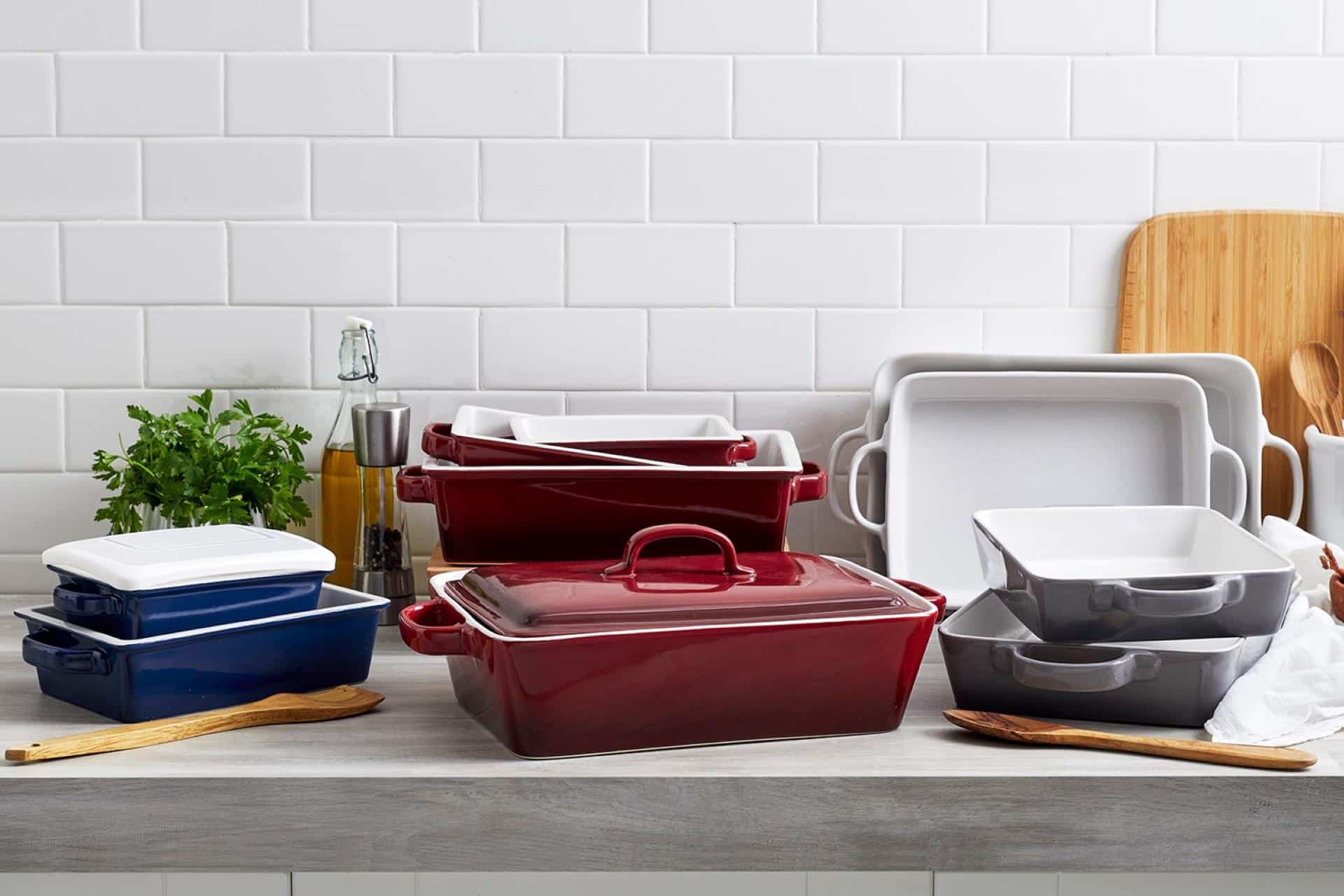
In the heart of the home kitchen, the humble casserole dish stands as a beacon of culinary creativity and comfort.
These versatile vessels are the cornerstone of countless recipes—from the bubbling layers of a classic lasagna to the golden, crispy topping of a shepherd’s pie and the rich, creamy baked macaroni and cheese. Casserole dishes invite experimentation, making them perfect for both involved Sunday dinners and quick weeknight favorites.
While we can safely say that most everyone is a fan of a hearty casserole, there’s an underlying challenge that cooks of all levels face: figuring out the right size dish to use.
When recipes call for a dish by quart capacity, the task can feel like a culinary puzzle. How do you translate quarts into the practical dimensions of length, width and depth—especially when considering the vast array of dishes available? Let’s dive into the world of casserole dishes, breaking down the basics of size and capacity to help you navigate your kitchen with ease and confidence.
Hungry for more? Our collection of Bakers & Casseroles has every size you could need from brands you love, like Staub, Le Creuset, Emile Henry and more!
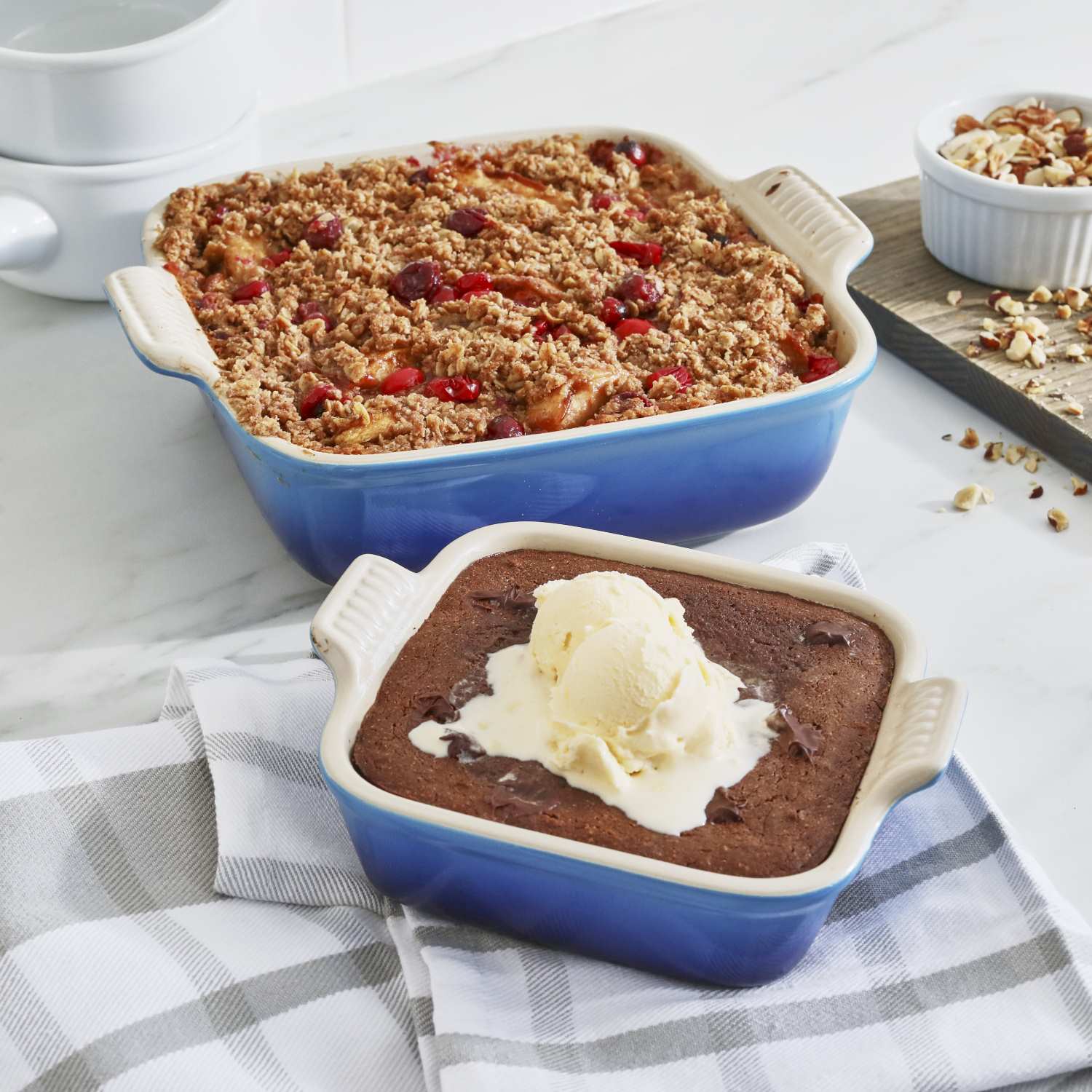
Square Casserole Dishes
Square baking dishes are popular for baking dense, rich dishes. They typically come in smaller sizes, making them ideal for side dishes or meals for smaller families.
- 1.5-quart square casserole dish: Approximately 8″ L x 8″ W x 1.5″ H. This size is perfect for small casseroles, brownies or cornbread.
- 2-quart square casserole dish: Slightly larger, usually around 9″ L x 9″ W x 2″ H. This size is suitable for medium-sized recipes.
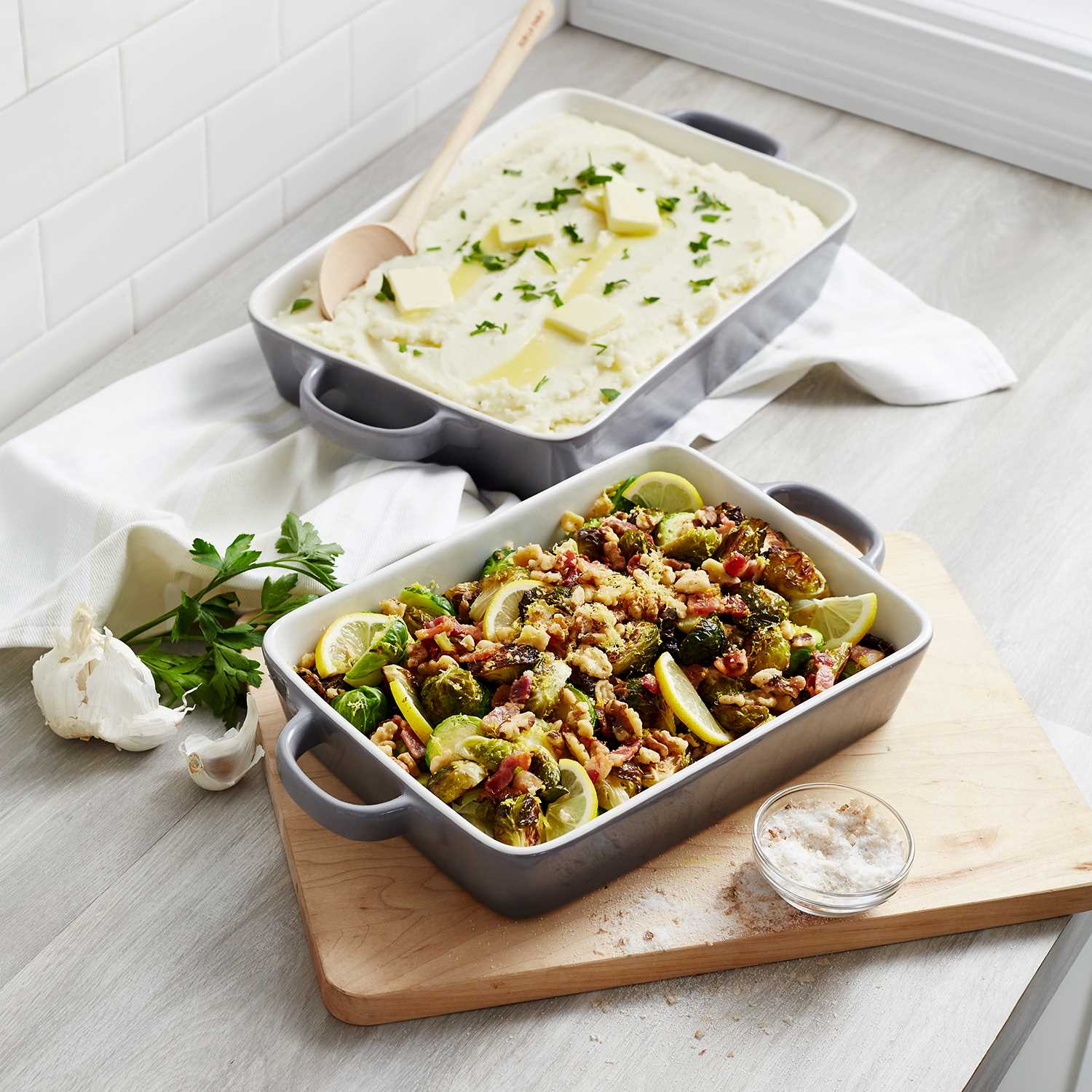
Rectangle Casserole Dishes
Rectangle dishes are the most common type of casserole dish, preferred for their versatility. They are excellent for a variety of dishes, from main courses to sides.
- 2-quart rectangle casserole dish: Roughly 11″ L x 7″ W x 1.5″ H. Ideal for smaller families or dishes that don’t rise much.
- 3-quart rectangle casserole dish: Measures approximately 13″ L x 9″ W x 2″ H. This is the most popular size, perfect for standard recipes serving 4–6 people.
- 4-quart rectangle casserole dish: Larger, around 15″ L x 10″ W x 2″ H, and suitable for larger families or gatherings.
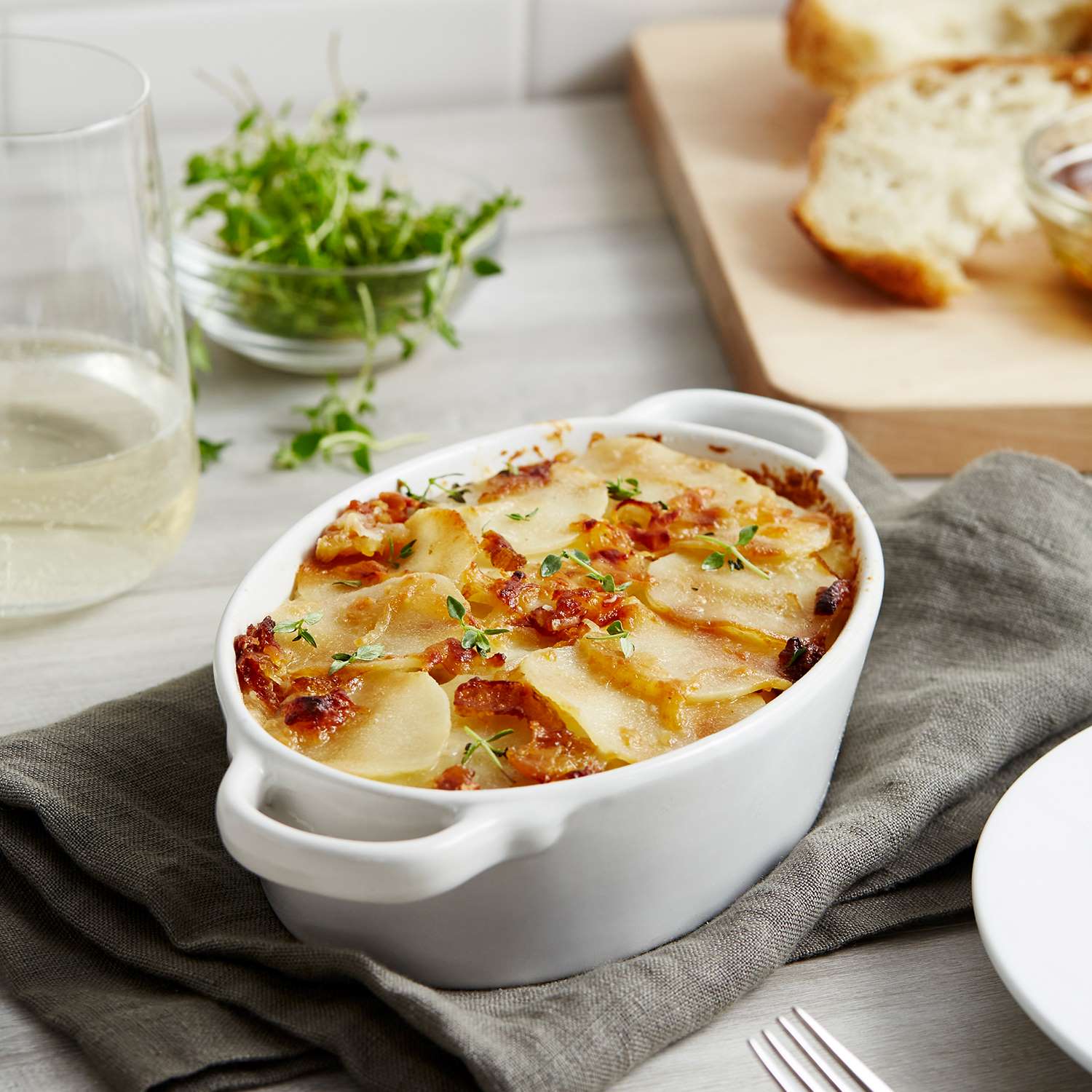
Oval Casserole Dishes
Oval casserole dishes offer a stylish alternative to the traditional rectangular shape, with their curved edges making them particularly good for roasts and poultry.
- 5-quart oval casserole dish: Typically 11″ L x 8″ W x 4″ H. Great for roasting vegetables or smaller poultry dishes.
- 5-quart oval casserole dish: Larger, at about 13″ L x 9″ W x 4″ H. This size is versatile for a range of dishes, including larger roasts.
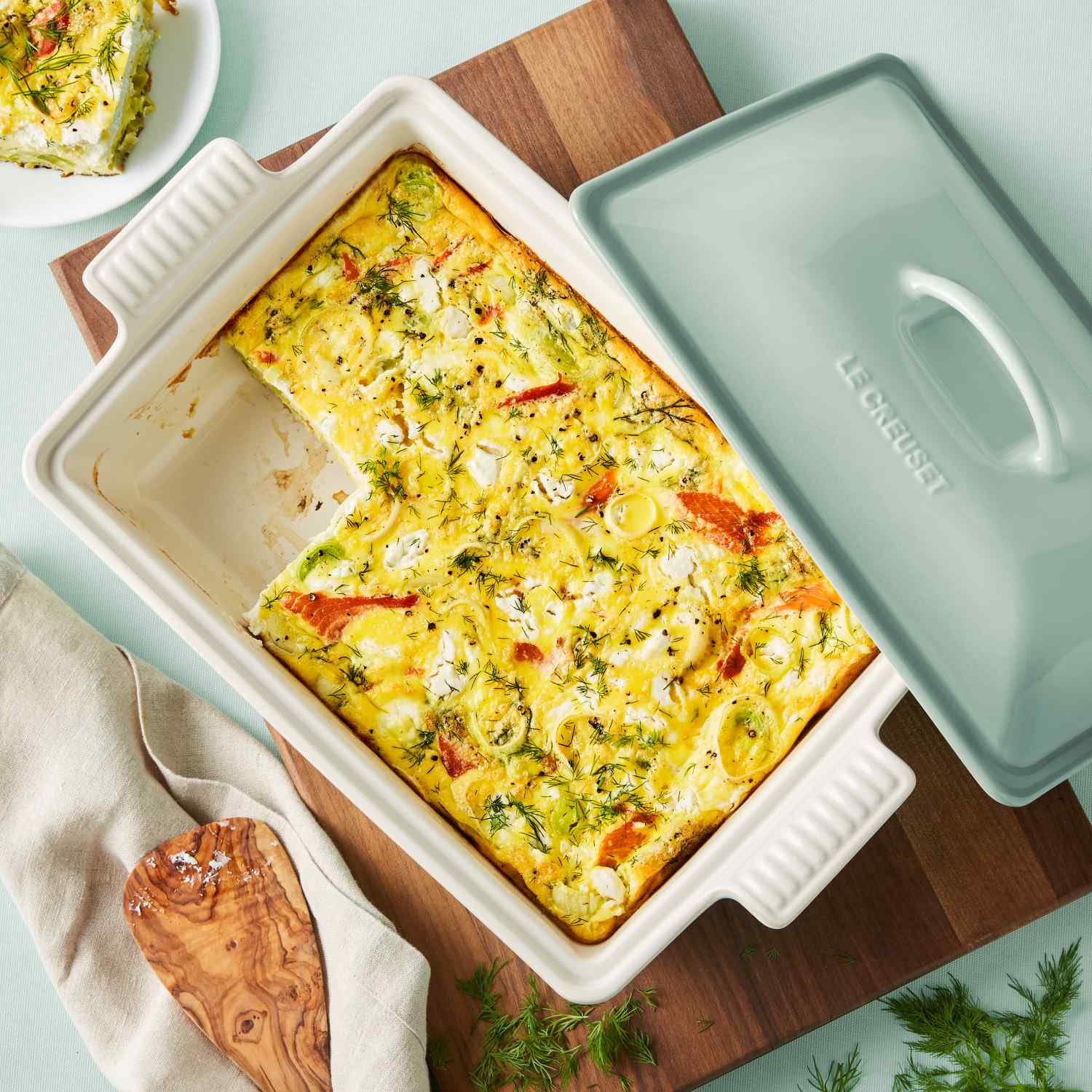
Practical measurement considerations
When selecting a baking dish size, consider the type of dishes you frequently cook. The depth of the dish is crucial, especially for recipes that rise significantly during cooking. Moreover, it’s important to note that the given dimensions are general estimates and can vary by manufacturer. Always check the specific dimensions and quart capacity provided by the brand to ensure the dish meets your needs.
In practical terms, having a variety of sizes at your disposal can be beneficial. For example, a 2-quart dish is excellent for side dishes, while a 3-quart dish is versatile enough for most main courses. For larger gatherings, a 4-quart dish is great to have.
Here’s a breakdown of things to consider when purchasing or selecting the right size casserole dish:
- Capacity vs Size: Understanding the difference between capacity (measured in quarts or liters) and size (measured in inches or centimeters) is crucial.
Capacity will tell you how much the dish can hold, which is vital for recipes that specify volume. Size, on the other hand, gives you a physical dimensions that can help you determine if it will fit in your oven, in storage cabinets or with the serving sizes you aim for.
- Shape: The shape of your casserole dish can affect the outcome of your dishes.
For instance, a deeper dish might be better for recipes with liquids, like braises or casseroles that you don’t want to dry out. A shallower, wider dish is great for achieving a crispy topping on dishes like gratins or mac and cheese. Consider what you cook most often when deciding between square, rectangular, oval or even round dishes.
- Compatibility: Consider your kitchen equipment. Ensure the dish is compatible with your oven size and any other equipment you might use it with, such as microwave ovens, freezers or dishwashers for easy cleanup.
Some materials, like certain metals, are not microwave safe, while others, like some ceramics, might crack with rapid temperature changes.
- Lid and Handle: Does the dish come with a lid? A lid can be a game-changer for dishes that need to stay moist or for storing leftovers. If it doesn’t come with a lid, check if you have suitable alternatives at home or if you can easily wrap it with aluminum foil or plastic wrap.
Handles are also nice and can make it easier to transport and serve directly from oven to table.
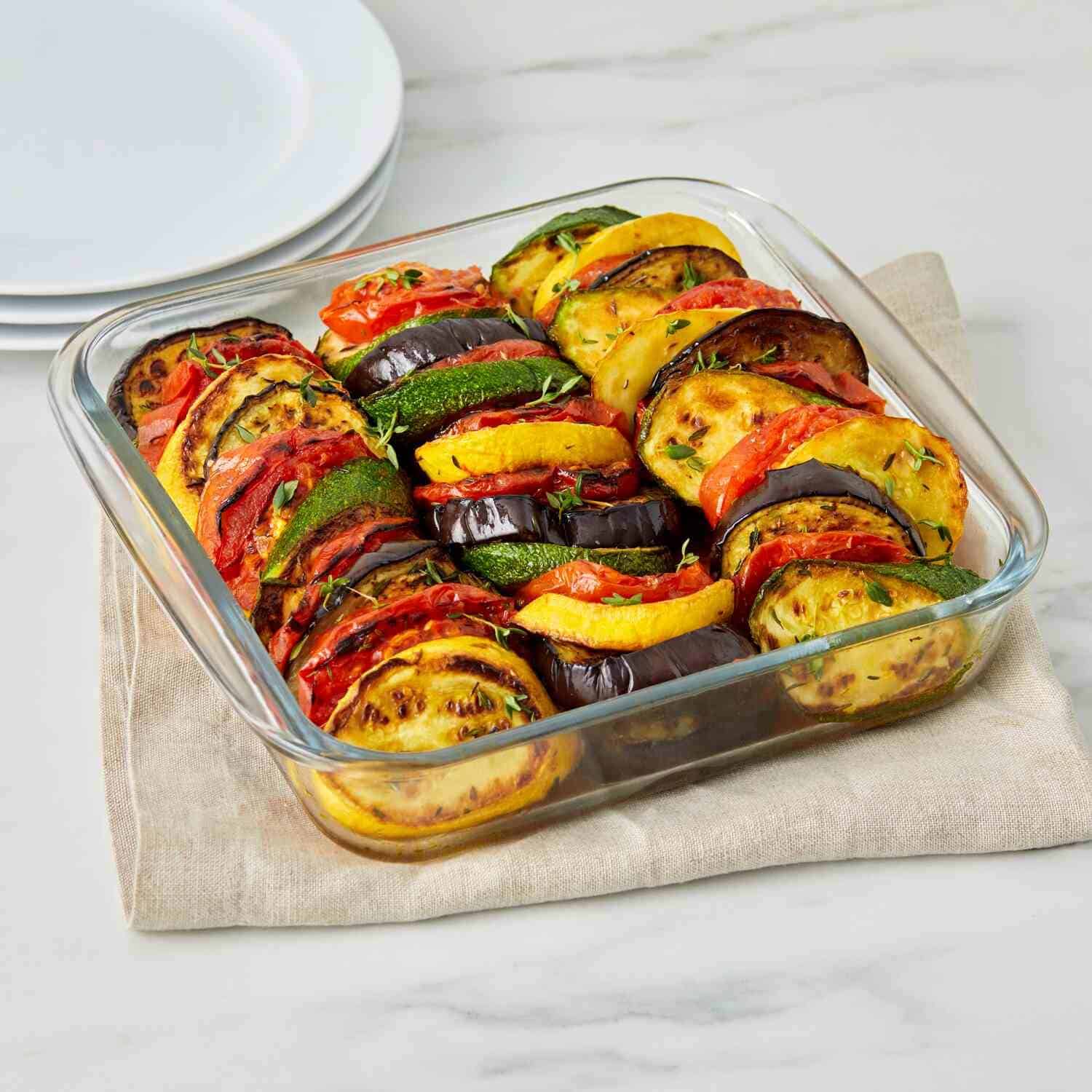
Casserole dish materials and how they affect cooking time
When selecting a casserole dish, the material is more than a matter of aesthetics—it directly influences cooking performance and time. Here’s an overview of common materials and how they might affect your next casserole:
- Ceramic: Ceramic dishes are popular for their aesthetic appeal and versatility. They distribute heat evenly, which helps prevent hot spots. Ceramic retains heat well, keeping your food warm long after it’s been removed from the oven. However, ceramic dishes often require a longer heat-up time, which may slightly extend the overall cooking time.
- Glass: Like ceramic, glass dishes offer an even heat distribution and excellent heat retention. They are also non-reactive, meaning they won’t interact chemically with acidic ingredients like tomatoes or lemon juice. Glass heats up and cools down relatively quickly, but it’s important to note that cooking times may need to be adjusted as glass can cause food to brown more rapidly than in metal pans. It’s often recommended to lower the oven temperature by 25°F when using glass to prevent overcooking.
- Cast Iron: Cast iron casserole dishes are prized for their durability and superior heat retention. They can be used on the stovetop and in the oven, making them incredibly versatile. Cast iron heats slowly but evenly—and once hot, it stays hot, which can significantly influence cooking times and outcomes. Dishes cooked in cast iron may cook faster once the dish is fully heated, especially for recipes requiring stovetop-to-oven transfers.
- Stoneware: Stoneware dishes are another popular choice, known for their heat retention and durability. Like ceramic, they provide even heat distribution, leading to evenly cooked dishes. Stoneware can take a bit longer to heat up, similar to ceramic, potentially requiring a slight adjustment in cooking times. However, stoneware’s excellent heat retention makes it ideal for recipes that benefit from a slow, steady cooking process.
- Metal: Metal casserole dishes, including those made from stainless steel, aluminum or coated with nonstick materials, heat up quickly and are great for achieving a crispy exterior on your dishes. They’re lightweight and durable but don’t retain heat as well as ceramic or glass. Cooking times in metal dishes might be shorter, and temperatures may need adjusting to avoid overbrowning or drying out the edges of your casserole.

FAQs about casserole dishes
How big is a 2-quart casserole dish?
A 2-quart casserole dish can vary in shape but is generally around 8″ L x 8″ W or 9″ L x 9″ W if square, and about 2 inches deep. For a rectangular shape, it might measure closer to 11″ L x 7″ W, but depth can influence capacity.
What size dish is used for most casserole recipes?
Many casserole recipes are designed for a 3-quart dish. This can be a rectangle approximately 13″ L x 9″ W and 2 inches deep, ideal for serving 4–6 people.
Can I use a round dish instead of a rectangular one for casseroles?
Absolutely. Ensure the round dish has a similar capacity to what your recipe requires. A 2-quart round dish typically has a diameter of 8–9 inches.
What’s the difference between a 9″ x 13″ dish and a 3-quart dish?
A 9″ W x 13″ L dish is very close in size to a 3-quart dish, with both being suitable for many recipes. The 9″ W x 13″ L is a measurement of length and width, while 3-quart refers to volume. Their actual capacity can be very similar, making them often interchangeable in recipes.
Is a 4-quart casserole dish too big for most recipes?
Not necessarily. While a 4-quart dish is larger, it’s excellent for feeding larger groups or if you prefer leftovers. Its dimensions might be around 14″ L x 10″ W x 2″ H, depending on shape.
How do I know if my casserole dish is oven safe?
Look for a label or manufacturer’s mark on the dish indicating it’s oven safe. Most ceramic, glass and metal dishes are designed for oven use, but it’s always best to confirm.
Can a glass dish and a metal pan be used interchangeably in recipes?
Yes, but keep in mind that metal heats up and cools down faster than glass. You might need to adjust cooking times and temperatures slightly when substituting one for the other.
Hungry for more? Our collection of Bakers & Casseroles has every size you could need from brands you love, like Staub, Le Creuset, Emile Henry and more!

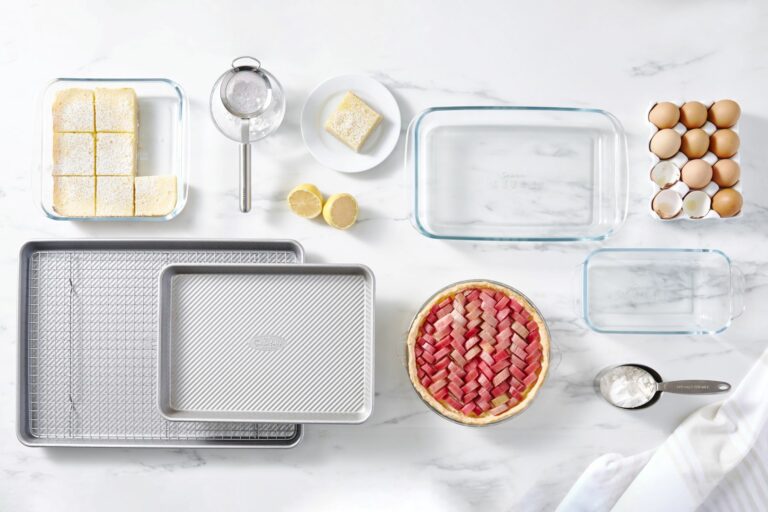
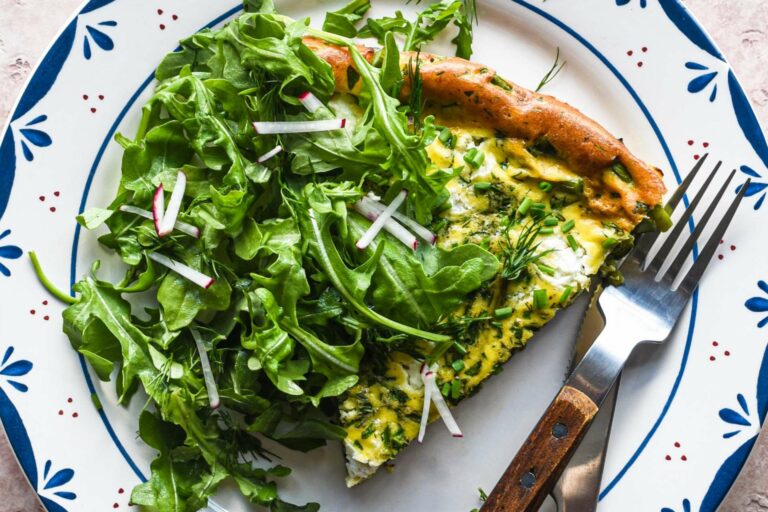
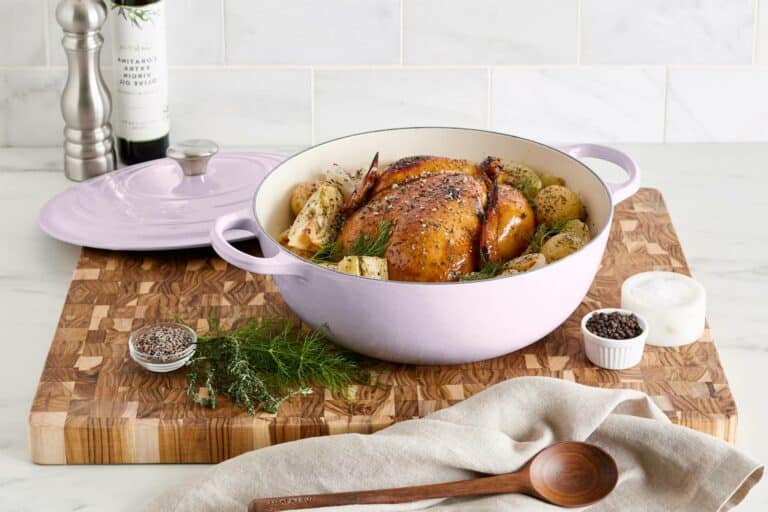
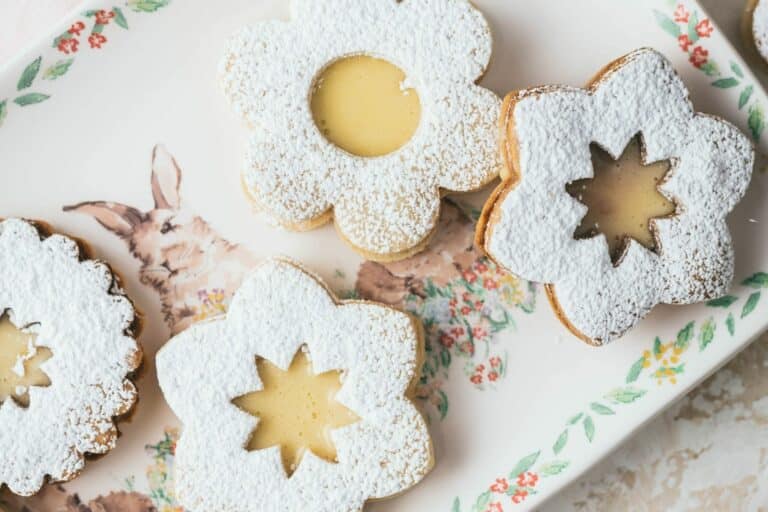
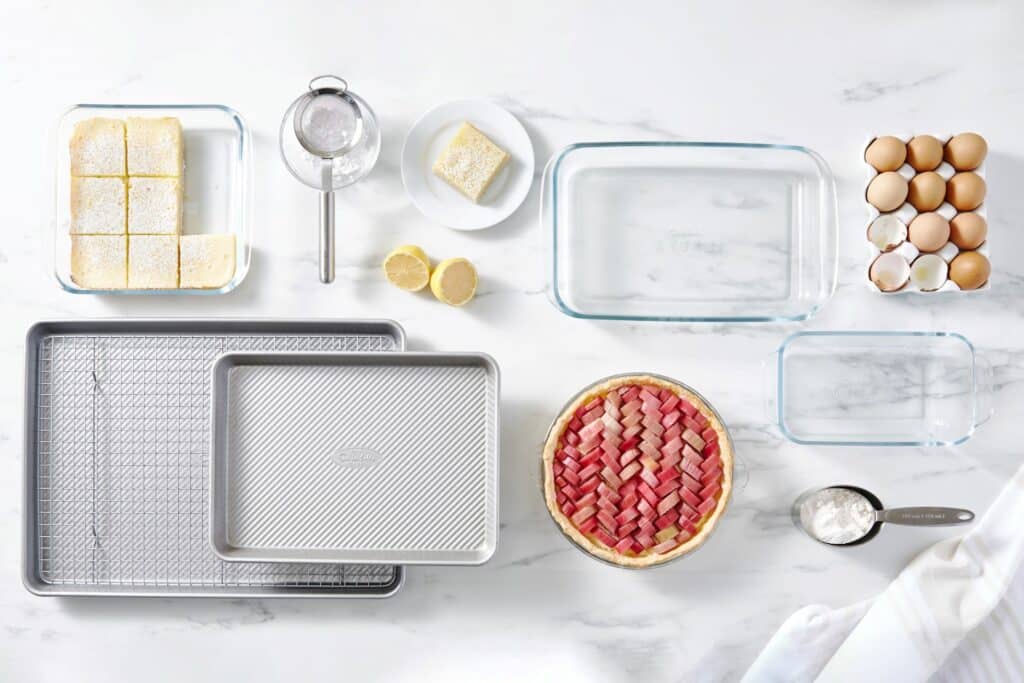
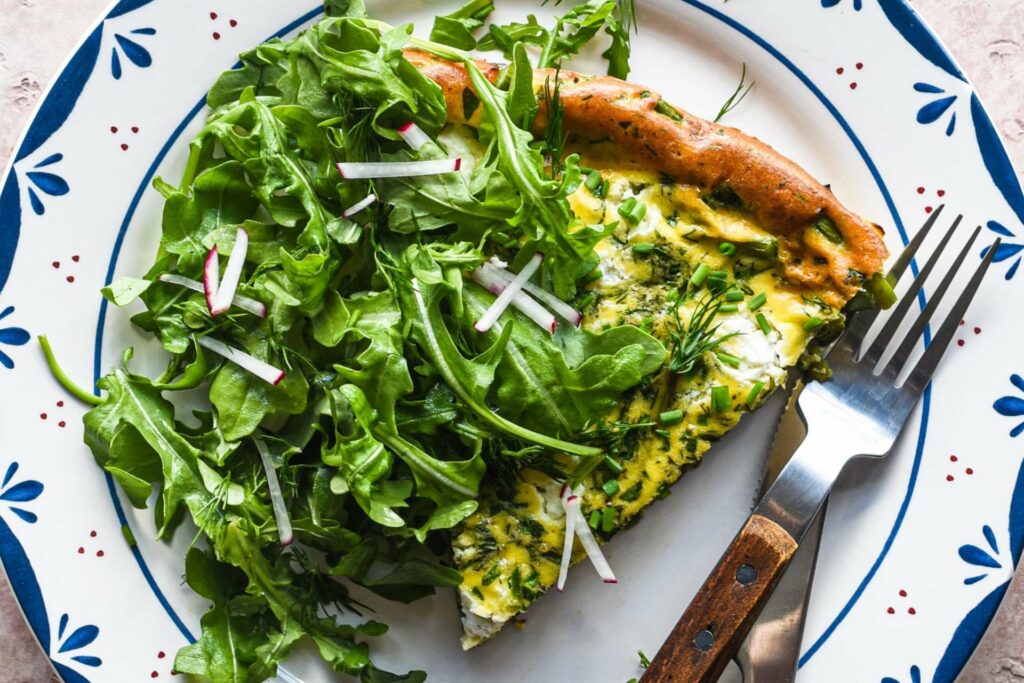
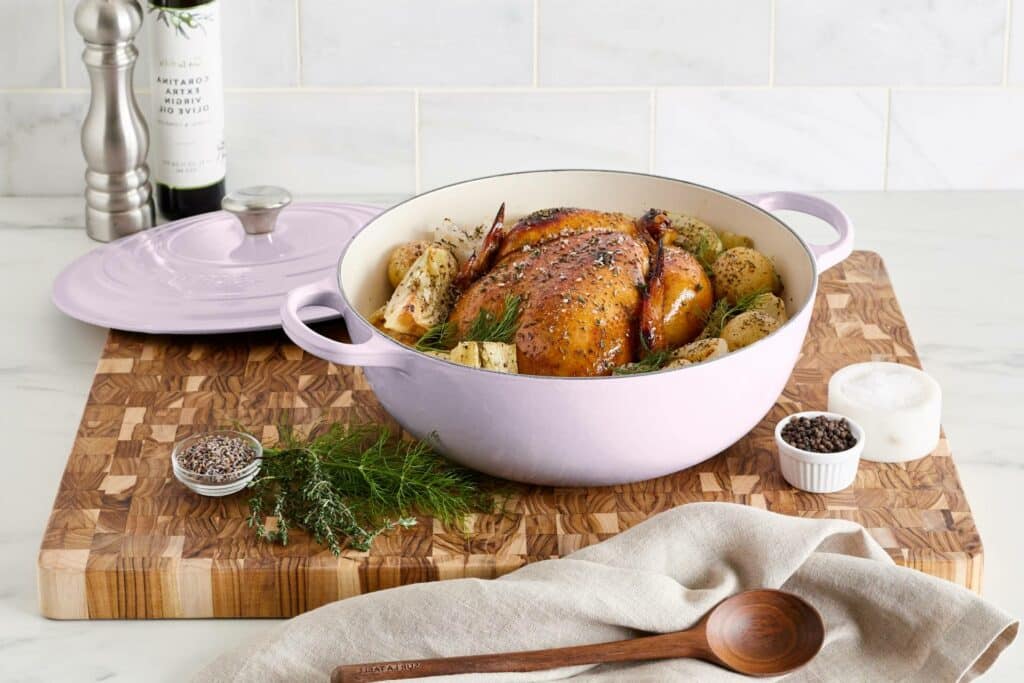
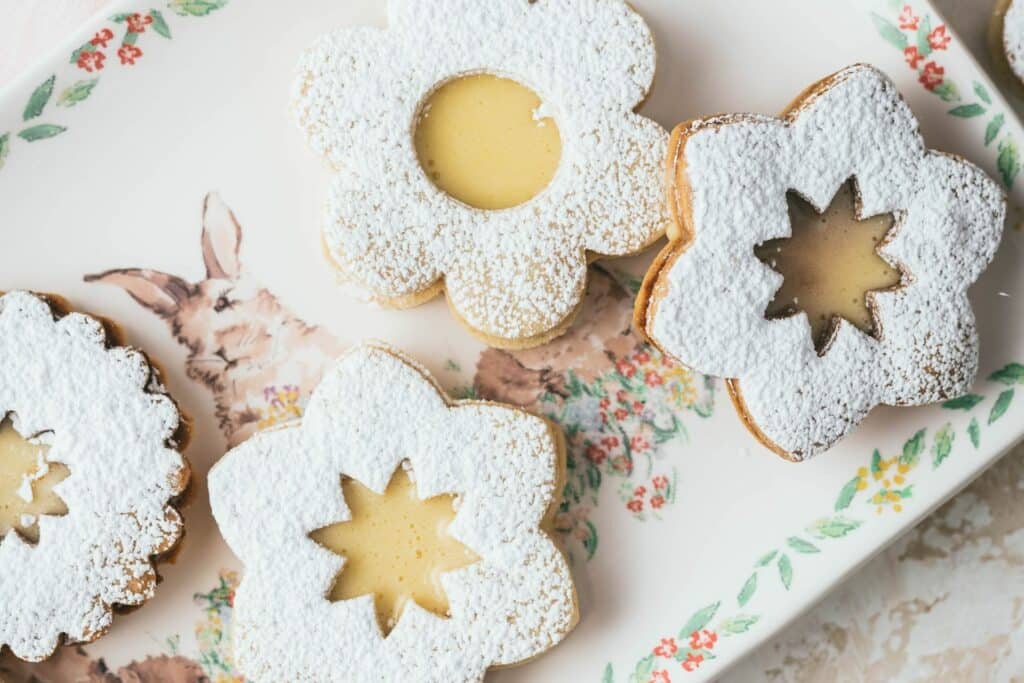
Great baking advise!! Thank-you!
2 1/2 qt casserole dish.